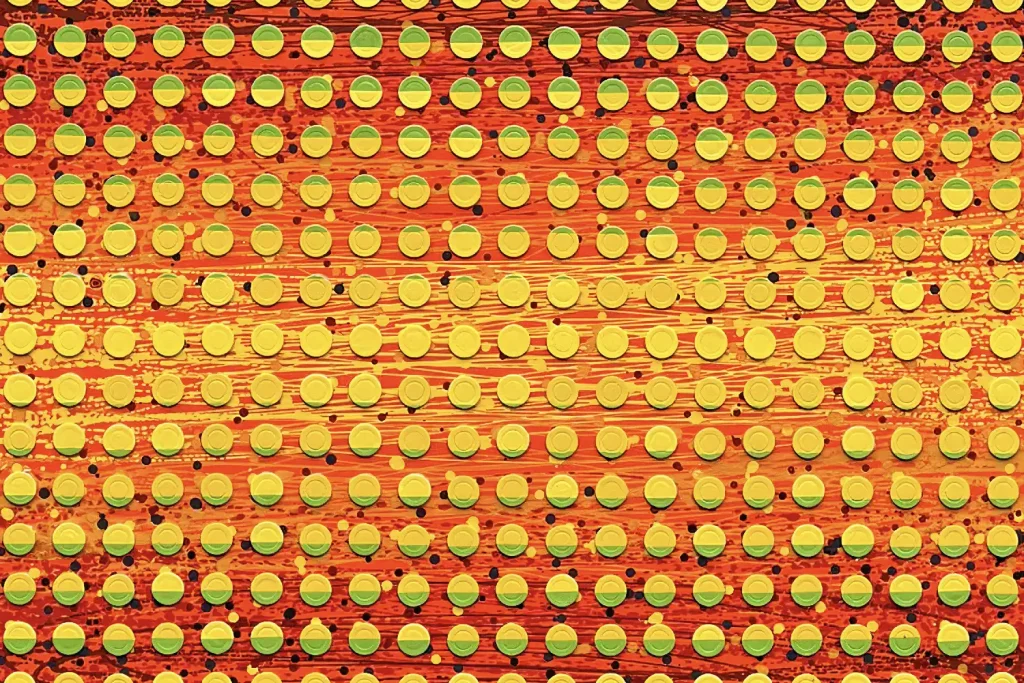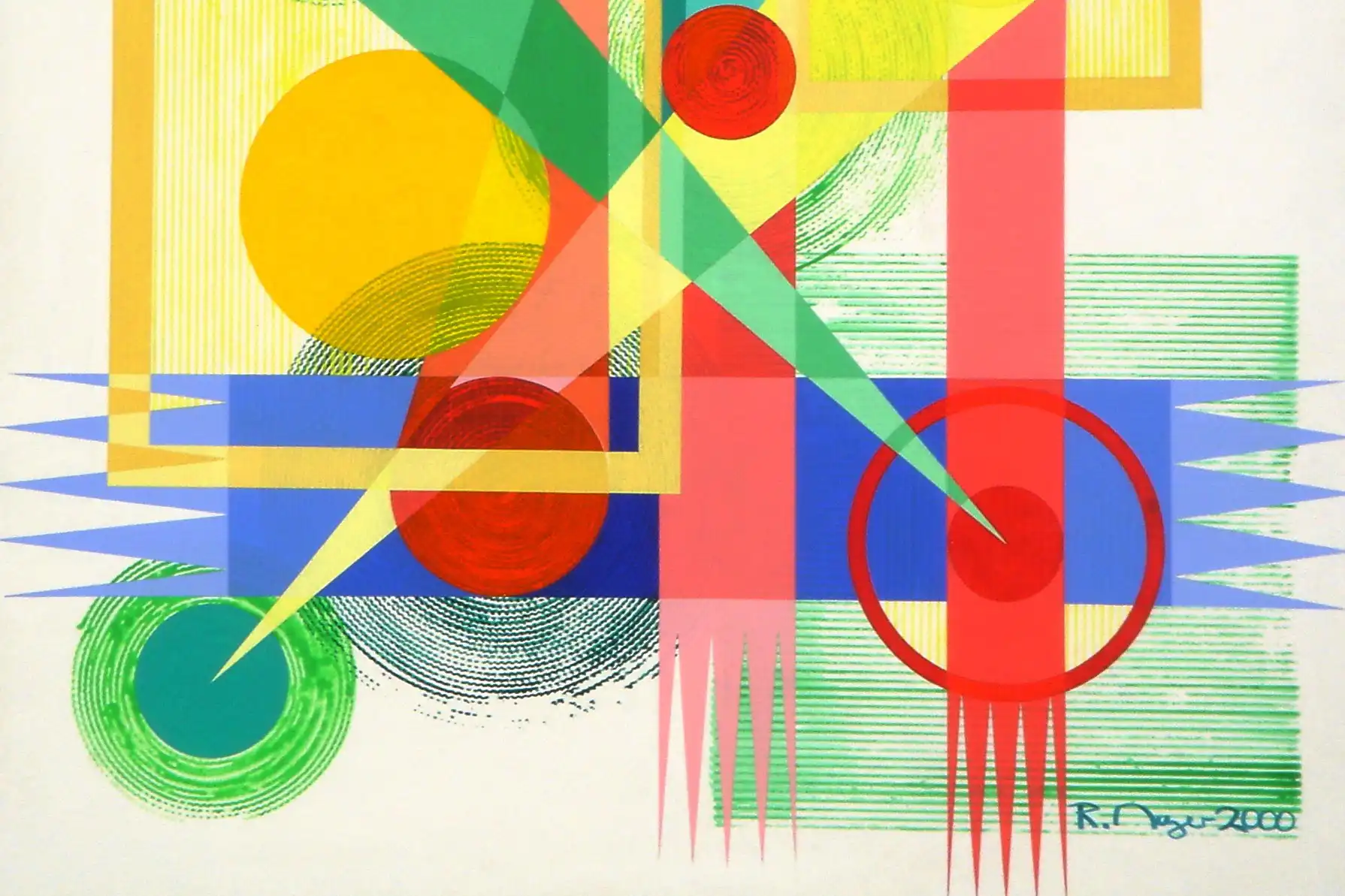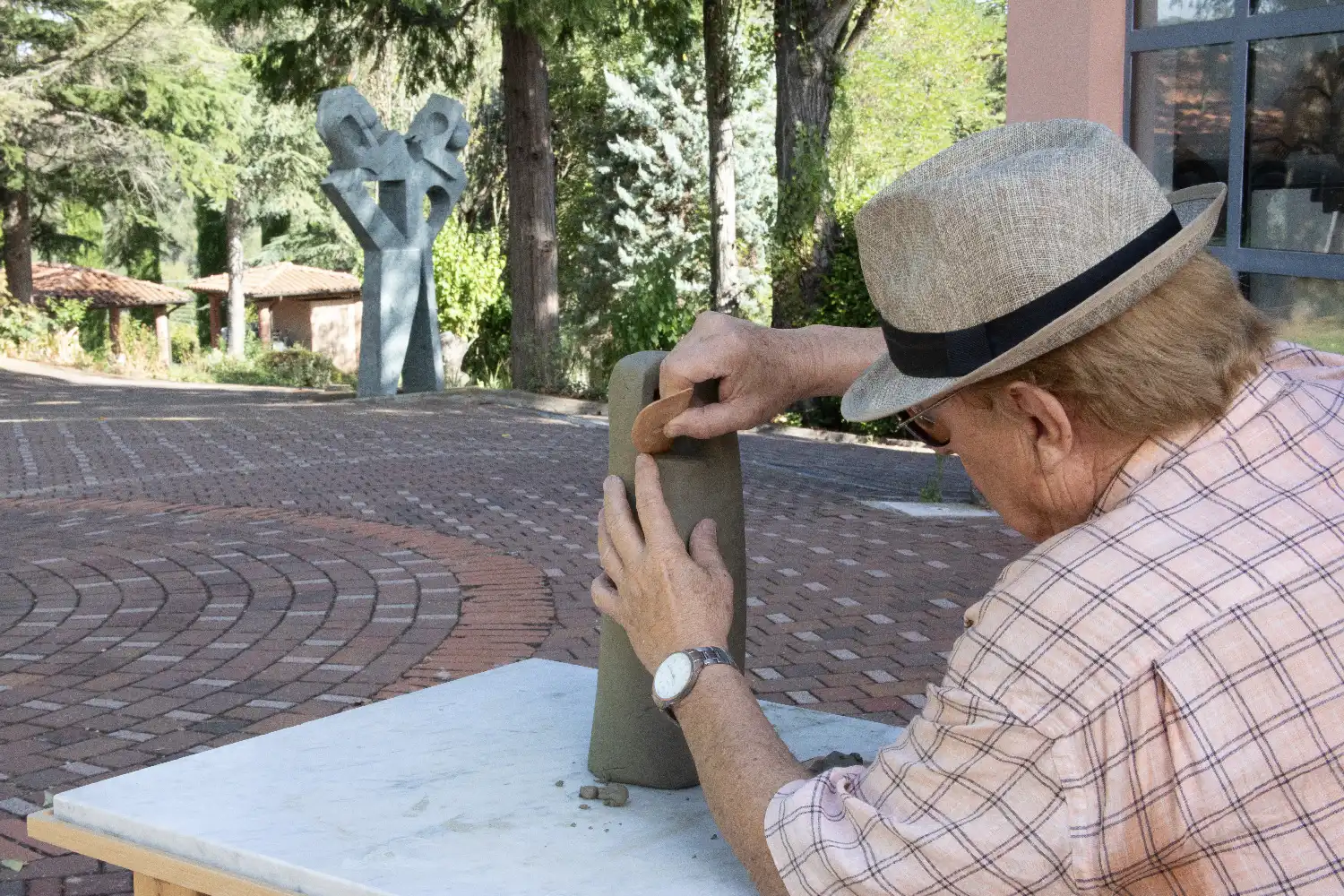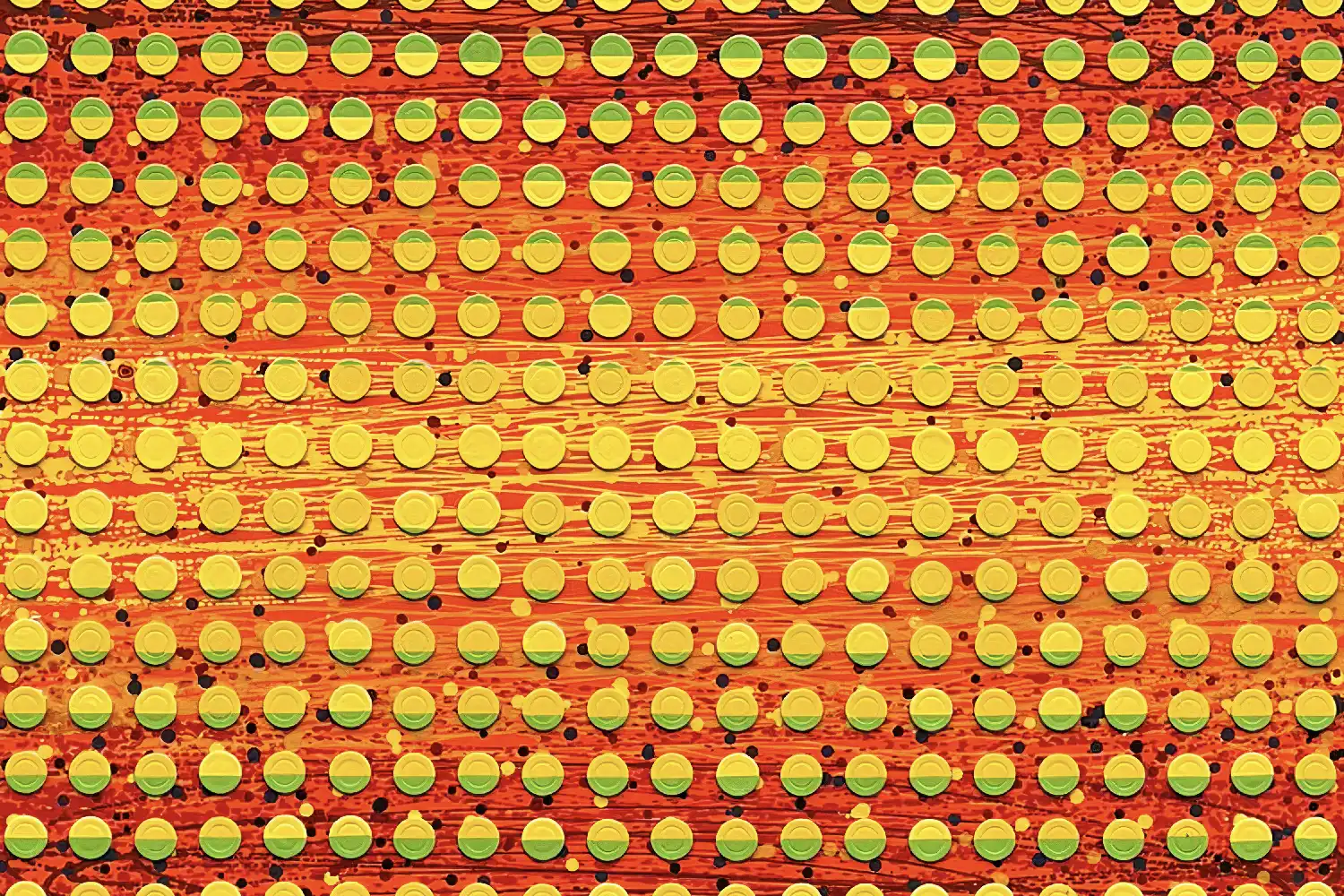A fundamental theme – chance as a mirror to human behavior
Chance in contemporary art is often understood as a technical process: improvised gestures, intentional accidents, uncontrolled devices. For René Mayer, it is not a central approach. His practice is characterized by rigor, construction, and attention to detail. But in the series “Imperceptible Shift”, chance becomes a major theme: not in technique, but in the game humans play with nature. Mayer sums it up this way: “We play with the Earth as if it were a casino.”
The casino token lies at the heart of this reflection. Fixed on the canvas, it condenses the idea of bet, speculation, belief in luck. Chance in contemporary art here takes on a critical dimension: it reflects our tendency to turn collective choices into games of chance whose outcome escapes us.
The pendulum – a one-time experiment
In certain canvases, René Mayer uses a pendulum dipped in paint. Suspended above the canvas, it traces unpredictable trajectories. This random element, though marginal in his work, interacts with the rigor of the grids of tokens. The effect lies in the contrast: on one side, the instability of lines produced by gravity; on the other, the strict order of grids and gradients.
Chance in contemporary art, as it appears in these experiments, does not replace control but acts as counterpoint. Mayer does not abandon mastery of his work: he simply allows in a degree of the unexpected to highlight the gap between order and the unforeseen.
Tokens and grids – rigor against instability
The “Imperceptible Shift” series is organized around regular grids composed of casino tokens. The initial impression is one of stable, almost algorithmic structure. Yet the observer soon discovers micro-shifts: a chromatic variation, a slight tilt, a disrupted alignment.
This imbalance introduces internal instability. Chance in contemporary art then manifests less in technique than in perception: the viewer realizes that every order carries within it a flaw. Mayer shows that human systems, even the most rigorous, are traversed by almost invisible drifts.
Comparisons – from Duchamp to Morellet
Art history has multiplied experiments with the unpredictable. Duchamp played with the Stoppages étalon, Cage drew on the I Ching, Pollock explored dripping, Arp let his papers fall by chance. Yet René Mayer distinguishes himself: the random remains secondary. It defines neither his method nor the whole of his work.
He is closer perhaps to Morellet or LeWitt, where system and rule frame deviation. In Mayer’s case, deviation takes the symbolic form of the token: the sign of a risky game, inserted into a solid grid but always liable to fracture. Here, chance in contemporary art is not spectacle but subtle unease.
Chance and responsibility – an ethical contrast
Integrating chance raises an ethical question. When a choice becomes a gamble, who assumes the consequences? The artist? The viewer? Society? René Mayer does not hide behind randomness: he uses it to interrogate our collective relationship to risk.
In his canvases, order wavers. It is not chaos that emerges, but tension: do we still perceive the overall beauty when we notice the flaw? Chance in contemporary art is here employed to reveal the fragility of our structures, without noise or provocation, but insistently.
A work in tension – order and drift
What distinguishes certain recent works in “Imperceptible Shift” is the constant tension between rigor and openness. The grids impose strict organization, but the eye lingers on the variations that break regularity. The random, introduced at times by the pendulum, accentuates this contrast: the free, unstable trace stands against the order of tokens.
Thus Mayer proposes a double experience: first contemplating an apparently stable system, then discovering that it rests on a latent flaw. Chance in contemporary art here becomes a training of perception: learning to detect what slips beneath ordered surfaces.
Conclusion – chance as sign, not as method
For René Mayer, chance is not a constant method. It remains marginal in his practice, but it takes on strong symbolic value in the series “Imperceptible Shift”. There, it becomes the sign of human behavior of risk taking, and greed when gambling.
In this sense, chance in contemporary art is not a gratuitous effect or a technical device, but a critical tool. Mayer’s works remind us that even our most solid structures rest on hidden instability. They do not aim to demonstrate but to suggest; we play with reality as with a casino chip, without always realizing that the game can suddenly turn.






